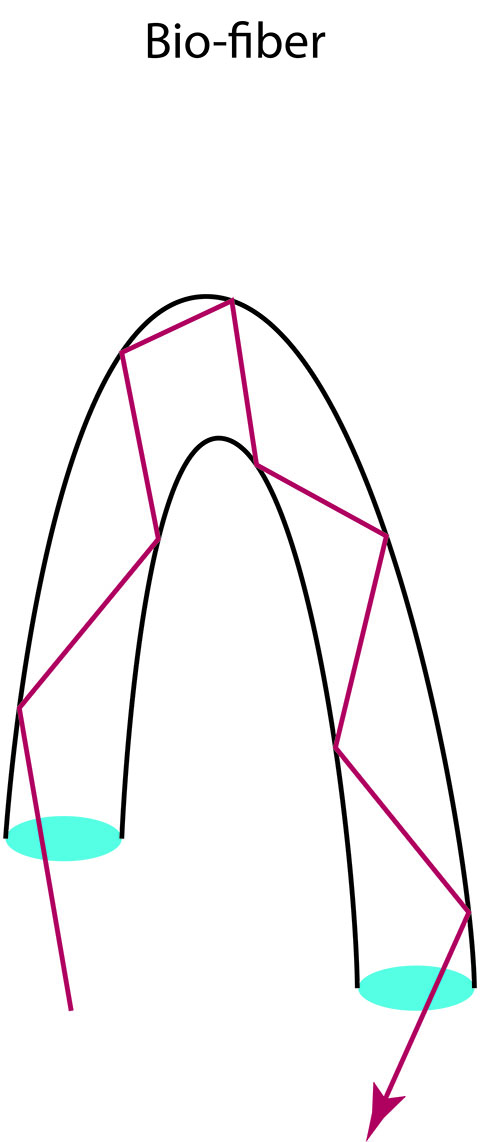Essay for July 2013: New Bio-fiber
Many of the animals that live on the Dock have either a hard shell on their outside (like the Skeleton Shrimp on the book's cover), or hard parts on the inside of the animal to help keep their shape (like the spicules of sponges, seen on page 22 of LOTD). It's easy to focus on the mineral (inorganic) component of shells and spicules, and forget that the formation and final properties of these materials are very dependent on the organic (mostly protein) molecules that are part of the final structures.
The protein part of the hard shell / spicule
Natalio et al. used the protein silicatein-α to make artificial spicules containing calcium carbonate. As suggested by the name of this protein, it is normally a component of spicules in sponges which contain silicon. However, in this artificial construction it reacts with calcium carbonate to form tubes 10-15 uM in diameter (about the size of a cell) and up to 0.3 mm long.
Structure of the calcium carbonate-protein tubes
The authors have only a rather vague idea of the molecular structure of these tube. This is not so surprising, we have only a vague idea of the structure of natural fibers in animals on the Dock. However, it does mean there is a great deal more work to be done.
Possible uses
Natalio et al. found that these tubes can act like the optical fibers used in communication. Light introduced into one end exits the other end with little attenuation. They found that the bio-fibers could be bent sharply (over a small radius) without breaking.
Before you invest all your money in a company that says it will develop this technology, note that the fibers described here are less than a mm long, while optical fibers that carry information over the INTERNET are many km long. In addition, long distance optical fibers are typically only abut one um in diameter. The diameter must be small (only a few light wavelengths) to force the light to move down the fiber as a single wave.
However, this report in Science is just a very early attempt to make bio-fibers. In addition, there are more uses for optical fibers than long distance communication. Thick fibers (multi-mode) are effective in transmitting light over distances of a few meters.
One area of intense research is the integration of optical and electrical links on a single computer chip. Self-assembly of fibers that can bend in very short distances could be very interesting for such systems, where multi-mode transmission would be quite acceptable. This is all very speculative, but exciting.
References
[1] Creating Flexible Calcite Fibers with Proteins. Sethmann, et al.Science vol 339, pg 1281 (15 March 2013)
[2] Flexible Minerals: Sel-Assembled Calcite Spicules with Extreme Bending Strength. Natalio et al.Sceince vol 339, p 1298 (15 March 2013)
